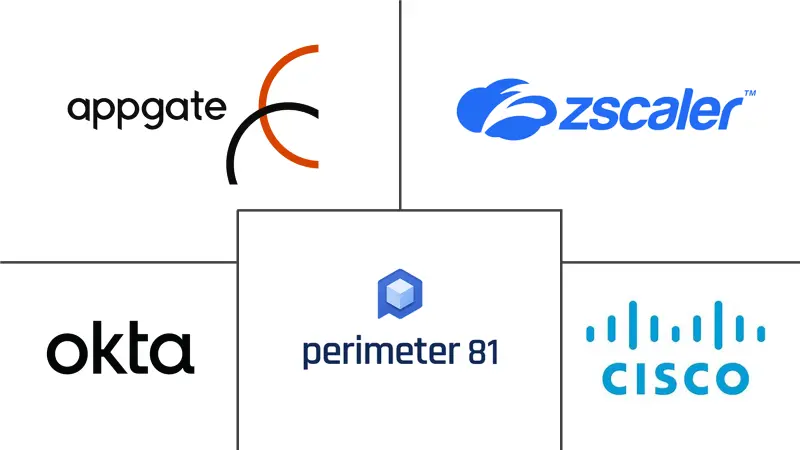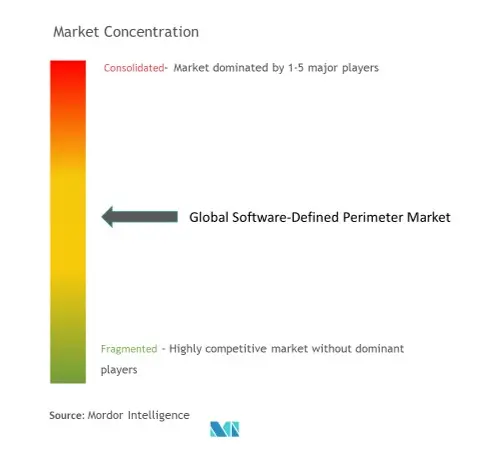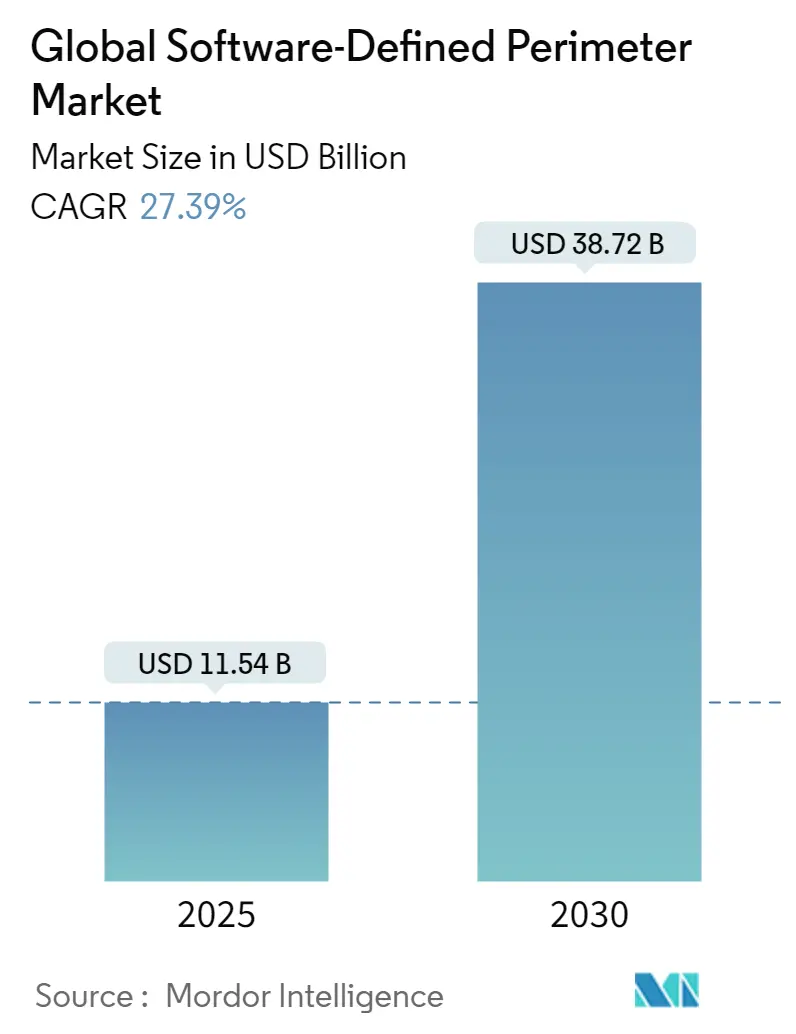
Software-Defined Perimeter Market Analysis
The Global Software-Defined Perimeter Market size is estimated at USD 11.54 billion in 2025, and is expected to reach USD 38.72 billion by 2030, at a CAGR of 27.39% during the forecast period (2025-2030).
- Cloud services are the primary drivers for digital transformation, with ubiquitous adoption in various industries. It has brought different security challenges for the business, which is the crucial reason for promoting the growth of the global software-defined perimeter market during the projected period.
- As most enterprises are at various stages of their hybrid IT implementation to support their digital business transformation, organizations will likely rely on both virtual private networks (VPN) and software-defined perimeter technology for some time. Many organizations have decided to implement SDP according to a business need, division, or region to support that set of users and applications. This introduces complications in managing two or more separate secure access systems, which contradicts IT consolidation's benefits and economies. Ultimately, organizations should progress their investment and initiatives for highly-secure access.
- Traditional on-premises VPNs can be expensive and difficult to operate and maintain. Thus, many organizations tasked with maintaining or moving to a new remote workforce are considering other network security alternatives. For example, some weigh software-defined perimeter as a vital VPN alternative. For instance, software-defined perimeter services from Palo Alto Networks and Zscaler can simplify remote access at a broad scale, pending some degree of financial and operational investment.
- Cloud services provide significant opportunities to accelerate the business through rapid scalability and the flexibility of resource utilization. It also reduces operational costs and controls financial spending on large-scale upgrades as cloud computing facilitates seamless scaling at reasonable costs.
- In addition, more and more businesses are implementing enterprise mobility solutions that enable and encourage employees to work from anywhere and through a wide range of devices. It has created a work-life balance and increased employee-consumer interaction and operational productivity by 34%. About 67% of the workforce is expected to adopt bring your own devices (BYOD) policy for work; this further emphasizes the need for network security for mobile and remote devices. According to the report, by 2023, 30% of IT organizations will extend their BYOD policy to cater to employees' wearables in the workforce, which will further drive the market.
- However, a lack of awareness of the critical benefits of software-defined perimeter solutions and the rise in demand for free and open-source security standards can hamper the market's growth.
- While many organizations put "deploying zero trust" on their "to-do" list, the COVID-19 pandemic sped up zero-trust adoption. Furthermore, with the rise of the cloud, the increasing use of software-defined wide area networks (SD-WANs) has given a new trend demand as it is a future-proof security model that encompasses the ways to detect and block exploits, phishing, ransomware, and other modern malware.
Software-Defined Perimeter Market Trends
BFSI Sector Will Experience Significant Growth
- Wide-scale adoption of digitalization in every sector has also touched the financial sector. Most banks are migrating their data, process, and infrastructure to hybrid cloud to benefit from both on-premises and off-premise cloud implementation.
- The rapid adoption of electronic devices and high internet penetration fuelled the growth of digital services and increased the customers' expectations for ease of payment, 24x7 uptime, secure storage, and interoperability. It has created an opportunity to maintain a multi-channel relationship with customers at a much-reduced cost. Cloud computing has also shortened the development cycles for new products and supports a faster and more efficient response to customers' needs.
- Further, several technology start-ups specializing in the financial segment have emerged, disrupting how we make purchases. For instance, in India, from app-based wallets and Aadhaar/UPI-linked instant transactions to single-window e-commerce apps, fintech start-ups need to be mindful of the threats and invest in robust data security frameworks for the apps. Such instances demand software-defined perimeter solutions to control cyber threats in the banking, financial services, and insurance (BFSI) industry.
- Many financial institutions collaborate with government organizations to advance cyber security awareness and protect sensitive data. For instance, in February 2022, the Department of Justice (DoJ) and the industry group Bankers Association of the Philippines (BAP) signed a memorandum of understanding (MoU) to raise cybersecurity awareness and combat cybercrime in the Philippines. In addition, the increased awareness among financial organizations would prompt deploying software-defined perimeter solutions.
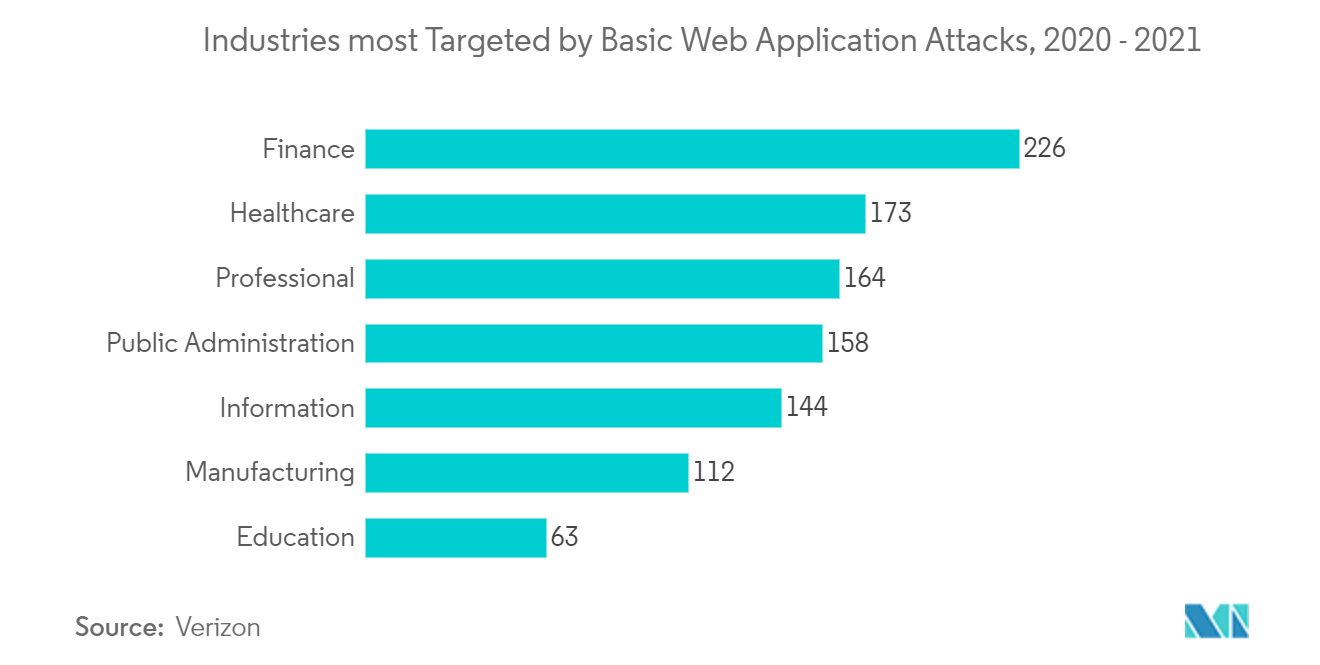
North America to Hold a Significant Market Share
- The healthcare industry is experiencing a transformation with new tools and technologies to reconstruct the delivery of health services to improve efficiency with better patient care. Mobile health applications and wearable technologies are leveraged as practical health tools to monitor patients' activities. For instance, smartphones are used as an adapter with electrocardiogram electrodes to transmit data to detect silent atrial fibrillation.
- According to Groupe Speciale Mobile Association (GSMA), by 2025, the number of Internet of Things (IoT) connections in North America is expected to grow to 5.9 billion from 2.3 billion in 2018. With the rising trend of IoT devices, the demand for high network security solutions is increasing, which caters to adopting the software-defined perimeter (SDP), mostly in medium and large enterprises.
- In April 2022, the US government launched the Bureau of Cyberspace and Digital Policy (CDP) to enhance cybersecurity across the nation, aiming to address cybersecurity challenges. In addition, the government would address the national security challenges, economic opportunities, and implications for US values associated with cyberspace, digital technologies, and digital policy. Further, the CDP bureau includes three policy units: International Cyberspace Security, International Information and Communications Policy, and Digital Freedom. Such initiatives taken by the government would further boost the market growth over the forecast period.
- Moreover, major players in the retail sector are embracing hybrid cloud solutions with various applications in their data centers and others in the public cloud to benefit from both on-premise and off-premise cloud implementation and create a great shopping experience. For instance, AmazonGo stores utilize a combination of computer vision, deep learning, and sensor fusion technology to automate the payment and checkout process so that customers can directly enter the store, pick up items and leave without queuing. In contrast, the payment is made automatically through the Amazon Go app. Therefore, the retail sector is shifting to digitalization and requires network security in the future, which paves a promising road for a software-defined perimeter market.
- The recent outbreak of COVID-19 worldwide resulted in a short-term increase in demand for security software owing to the increased usage of API and other services from distributed infrastructure. However, this is expected to influence a significant growth in demand over the next few years as the number of enterprises adopting digital infrastructure is expected to increase.
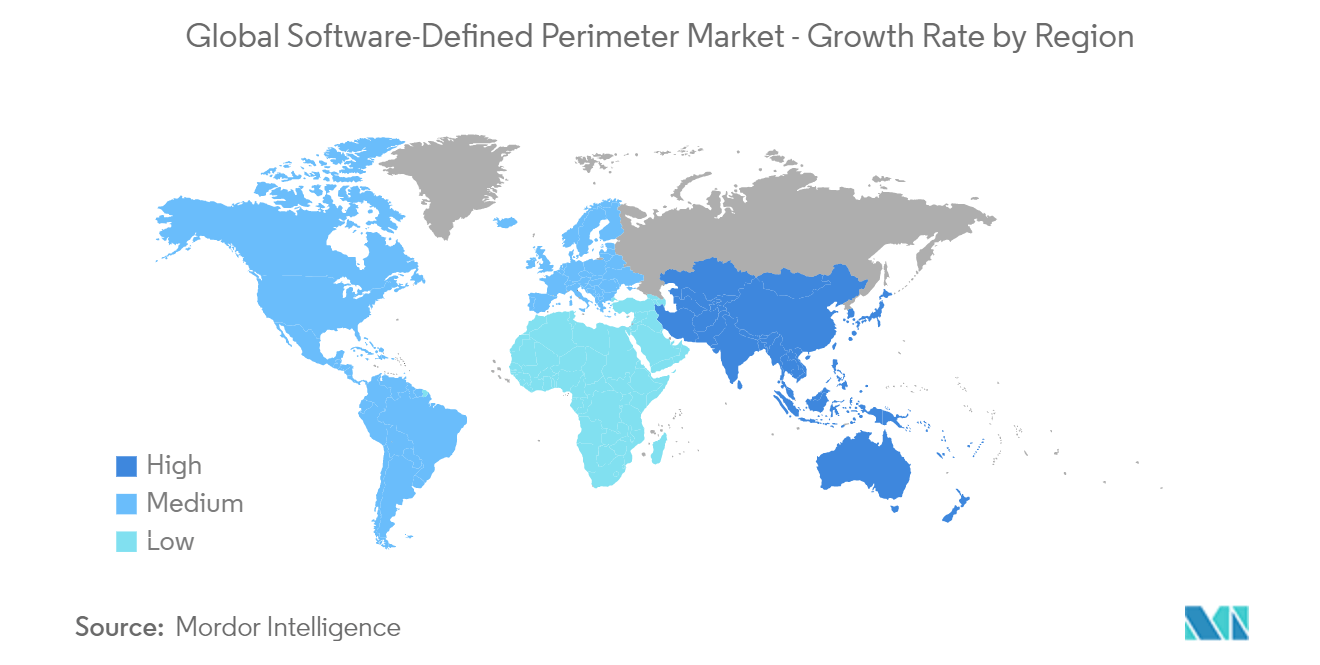
Software-Defined Perimeter Industry Overview
The software-defined perimeter market is moderately concentrated and dominated by significant players like Perimeter 81, ZScaler, Cisco Systems, Inc, Okta Inc., APPGate, and Check Point. With a significant market share, these major players focus on developing their customer base across foreign countries. In addition, these companies are leveraging strategic collaborations and partnerships to raise their market share and boost their profitability. However, with product innovations using technological advancements, mid-size to smaller firms are growing their market presence by tapping new markets and securing new contracts.
In June 2022, Johnson Controls announced the acquisition of Tempered Networks to bring zero-trust cybersecurity to connected buildings. Tempered Networks use software-defined perimeters to create secure communications enabling micro-segmentation of building networks and granular access control and authentication that fortifies critical data and services. Tempered Networks has created 'Airwall' technology, an advanced self-defense system for buildings that enables secure network access across diverse groups of endpoint devices, edge gateways, cloud platforms, and service technicians.
Moreover, in April 2022, The Cloud Security Alliance (CSA) published the software-defined perimeter (SDP) 2.0 specification created by their SDP and zero-trust working groups. SDP 2.0 specification helps security and technology organizations understand the core components and tenets of implementing an SDP. It also highlights the synergies among efforts such as cloud-native architectures, service-mesh implementations, and the broader pursuit of zero trust.
Software-Defined Perimeter Market Leaders
-
Perimeter 81
-
ZScaler
-
Cisco Systems, Inc
-
Okta, Inc
-
APPGate
- *Disclaimer: Major Players sorted in no particular order
Software-Defined Perimeter Market News
- January 2023: InstaSafe, a Bangalore-based security service provider, announced the expansion of its product base across India and SAARC by partnering with iValue InfoSolutions, a technology services and solutions aggregator across India and South-East Asia. Both organizations are working towards promoting software-defined perimeter (SDP) based zero trust security solutions to address cloud security, identity management, and remote access across the Indian subcontinent.
- February 2022: Appgate, a software-defined perimeter (SDP) provider that controls access to IT platforms, announced that it had extended its SDP solution support for Kubernetes clusters for creating a zero-trust IT environment. The aim is to enable an IT team to employ a single framework to enforce a standard set of security policies across both legacy monolithic environments and the cloud-native applications that are now being deployed at a faster rate in production environments.
Software-Defined Perimeter Industry Segmentation
A software-defined perimeter is an approach to computer security that micro-segments network access and eliminates the surface of attack. It authenticates and authorizes all endpoints that try to access a particular infrastructure and reduces the surface area of attack by hiding network resources from unauthorized users. It operates in cloud networks, provides expandable security, and eliminates credential theft, internal network attacks, malware, and man-in-the-middle attacks.
The software-defined perimeter market is segmented by type (solutions and services), by deployment mode (cloud and on-premise), by end-user verticals (BFSI, telecom and it, healthcare, retail, and government), and by geography (North America, Europe, Asia-Pacific, and Rest of the World).
The market sizes and forecasts regarding value (USD million) for all the above segments are provided.
| Type | Solutions |
| Services | |
| Deployment Mode | Cloud |
| On-Premise | |
| End-User Verticals | BFSI |
| Telecom and IT | |
| Healthcare | |
| Retail | |
| Government | |
| Other End-user Verticals | |
| Geography | North America |
| Europe | |
| Asia-Pacific | |
| Rest of the World |
Software-Defined Perimeter Market Research FAQs
How big is the Global Software-Defined Perimeter Market?
The Global Software-Defined Perimeter Market size is expected to reach USD 11.54 billion in 2025 and grow at a CAGR of 27.39% to reach USD 38.72 billion by 2030.
What is the current Global Software-Defined Perimeter Market size?
In 2025, the Global Software-Defined Perimeter Market size is expected to reach USD 11.54 billion.
Who are the key players in Global Software-Defined Perimeter Market?
Perimeter 81, ZScaler, Cisco Systems, Inc, Okta, Inc and APPGate are the major companies operating in the Global Software-Defined Perimeter Market.
Which is the fastest growing region in Global Software-Defined Perimeter Market?
Asia Pacific is estimated to grow at the highest CAGR over the forecast period (2025-2030).
Which region has the biggest share in Global Software-Defined Perimeter Market?
In 2025, the North America accounts for the largest market share in Global Software-Defined Perimeter Market.
What years does this Global Software-Defined Perimeter Market cover, and what was the market size in 2024?
In 2024, the Global Software-Defined Perimeter Market size was estimated at USD 8.38 billion. The report covers the Global Software-Defined Perimeter Market historical market size for years: 2019, 2020, 2021, 2022, 2023 and 2024. The report also forecasts the Global Software-Defined Perimeter Market size for years: 2025, 2026, 2027, 2028, 2029 and 2030.
Our Best Selling Reports
Software-Defined Perimeter Industry Report
Statistics for the 2025 Global Software-Defined Perimeter market share, size and revenue growth rate, created by Mordor Intelligence™ Industry Reports. Global Software-Defined Perimeter analysis includes a market forecast outlook for 2025 to 2030 and historical overview. Get a sample of this industry analysis as a free report PDF download.

